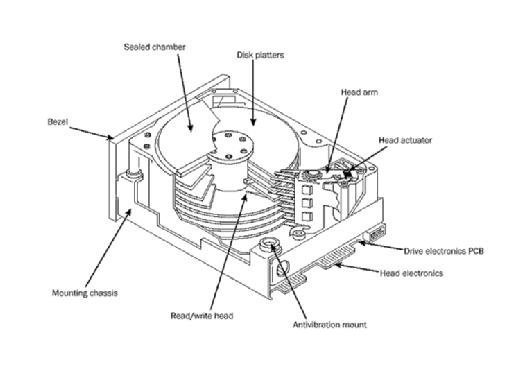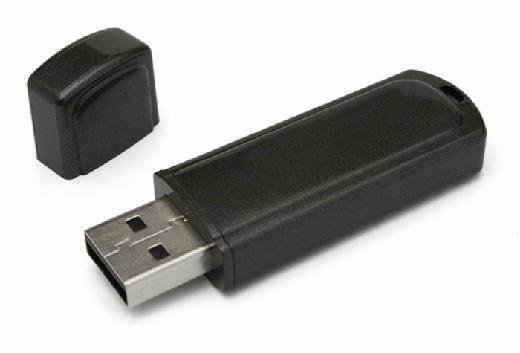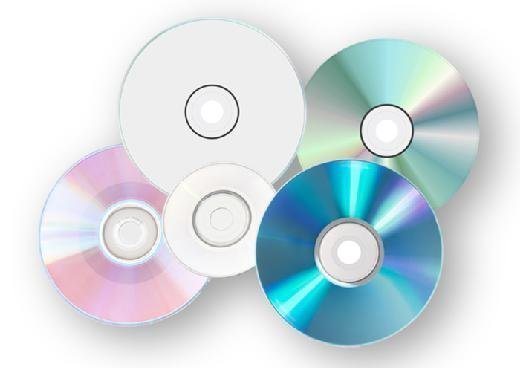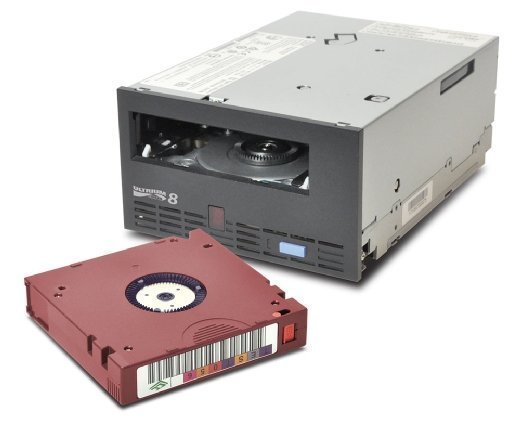storage medium (storage media)
What is a storage medium (storage media)?
In computers, a storage medium is a physical device that receives and retains electronic data for applications and users and makes the data available for retrieval. The storage medium might be inside a computer or other device or attached to a system externally, either directly or over a network. The plural form of this term is storage media.
Early forms of storage media included computer paper tape with holes punched into it. Each hole corresponded to a single bit of data. A paper tape reader would interpret the hole and convert it to a number. Punched cards were also widely used in the early days of data storage and at one time stored most of the world's digital information.
Paper tape and punched cards were supplanted by magnetic tape, which eventually gave way to magnetic floppy disks. Hard disk drives (HDDs) and solid-state drives (SSDs) are now the primary forms of storage.
How storage media works
Media used in computer storage receive messages in the form of data, via software commands from a host system. The type of media needed to hold the data depends on the data's business value, applicable compliance regulations, performance and availability requirements and other factors.
A storage medium may be internal to a computing device, such as a computer's SSD, or a removable device such as an external HDD or universal serial bus (USB) flash drive. There are also other types of storage media, including magnetic tape, compact discs (CDs) and non-volatile memory (NVM) cards.
An organization's storage is often classified as primary and secondary. Originally, primary storage referred to data that is kept in memory for fast retrieval by a computer's processor, and secondary storage referred to data stored on non-volatile devices such as SSDs and HDDs.
More recently, primary storage has come to refer to any type of memory that supports an organization's day-to-day workloads. For example, the HDDs, SSDs or storage-class memory (SCM) devices that store data for mission-critical applications are considered primary storage. In contrast, secondary storage can refer to just about anything else, including optical discs or tape systems that support long-term data retention.
In tiered storage, automated software policies are used to move data between different storage types, such as HDDs, SSDs and cloud platforms.
The term storage medium can refer to a storage device in its entirety or to an individual component that's used in conjunction with or is part of another system. For instance, the internal HDDs and SSDs in computers are commonly referred to as storage media, as are CDs, but the CD drive itself is thought of as a storage device or system, rather than storage medium.
Similarly, an array is a complete storage system made up of individual storage media. An array is often decoupled from the Application Server and attached to a separate server and accessed over a network. An array might be made up of HDDs or SSDs, or it might be set up in a hybrid configuration that blends HDDs and SSDs into an integrated system, with HDDs providing a capacity tier that supports the faster SSDs.
Storage media can be arranged in multiple ways, depending on workload requirements. Some well-known configurations include:
- redundant array of independent disks (RAID);
- network-attached storage (NAS); and
- storage area network (SAN).
These configurations are not mutually exclusive. For example, a SAN often arranges storage into RAID configurations.
Different types of storage media
Storage media comes in many different forms, among them:
Hard disk drives
An HDD provides a high-capacity alternative to magnetic storage media such as tape or floppy disks. It contains metal platters coated with a magnetic layer. The platters usually spin continuously when a computer is on, storing data in different sectors on the magnetic disk.
Hard disks continue to be the dominant media for backup storage appliances, active archives and long-term retention. A disk-based backup appliance might also include interfaces to replicate data copies, such as clones and snapshots, to tertiary devices or a hybrid cloud.

A downside to HDDs is the reliance on moving internal mechanisms such as actuators, motors and spindles that can fail and corrupt the drive. However, HDDs remain popular in enterprise disk arrays due to their increasing capacities and the ability to rewrite data on the disk. In 2017, Western Digital Corp. introduced a 14 TB HDD, making it the largest on the market at that time. Seagate Technology followed in 2019 with a 16 TB HDD. Western Digital has since countered with a 20 TB HDD.
Some HDDs use shingled magnetic recording (SMR) as an alternative to conventional magnetic recording. An SMR method allows for greater areal density by allowing data to be written in partially overlapping tracks on the disk. SMR drives work optimally with data that is continuously written, such as disk-based archiving and backup, but it can negatively impact performance for other types of workloads.
Seagate, Western Digital and Toshiba are among the leading manufacturers of SMR-based disks. In 2020, however, controversy surrounded the three vendors for allegedly selling HDDs without disclosing they used SMR technology.
RAID
RAID works by placing data on multiple disks and balancing input/output (I/O) operations across those disks. RAID can improve performance, fault tolerance or both, depending on the RAID configuration. If RAID is set up for fault tolerance, the data is protected in the event a drive fails. The use of multiple disks also increases the mean time between failures (MTBF).

Flash memory
Flash memory does not depend on moving mechanical parts. Instead, data is written to microchips, making storage operations much faster than traditional disks. However, data must be erased and rewritten in entire blocks, which can affect a device's overall endurance.
There are two main types of flash SSDs: NAND and NOR. The names are defined by their respective logic gates, which determine the fundamental architecture underlying digital circuits.

NAND flash memory is written and read in blocks, whereas NOR flash memory reads and writes bytes independently. Both types of flash are used in a wide range of devices. NOR flash tends to be used in embedded systems that support devices such as medical equipment and scientific instruments, as well as consumer devices such as tablets and smartphones. In some cases, NOR serves as a replacement for random access memory (RAM) or read-only memory (ROM) drives.
NAND flash is used for all types of general storage because it is much more efficient at writes, erases and sequential reads. NAND flash is also known for higher density and endurance than NOR, making it suitable for enterprise storage. Some devices use both types of flash. For example, a smartphone might rely on NOR to boot up the operating system (OS) and NAND flash for all other storage.
SSDs based on NAND flash are often categorized by the number of bits supported by each flash cell. Single-level cell (SLC) NAND stores 1 bit of data per flash cell, which is in either a programmed (0) state or erased (1) state. Multi-level cell (MLC) NAND stores two bits of data per flash cell, triple-level cell (TLC) stores three data bits per cell, and quad-level cell (QLC) stores four bits. Manufacturers are currently working on penta-level cell (PLC) flash, which squeezes five bits into each cell.
Flash storage memory devices are divided between consumer devices and enterprise storage, with some overlap. Enhancements are built into enterprise NAND flash devices to support more write cycles than consumer-grade storage. Smartphones, tablets and other consumer devices use memory cards that vary in capacity and price.
SSD
Organizations now use flash-based SSDs extensively for both network-based storage -- such as NAS and SAN -- and direct-attached storage (DAS), which can be attached externally to a computer or embedded directly within the system. Direct-attached SSDs are sometimes used as an alternative or adjunct to networked storage arrays.
Internal SSDs come in a number of form factors, including:
- add-in cards that utilize a Peripheral Component Interconnect Express (PCIe) serial port;
- disk-on-module (DOM) flash boot drives that mount to a computer's motherboard;
- flash-based dual inline memory modules (DIMMs) that sit in dynamic random-access memory (DRAM) slots on the motherboard to provide a performance cache;
- miniSATA (mSATA) drives and their eventual replacement, 2 SSDs, which are used in thin laptops; and
- storage-class memory, which combines DRAM and NAND to provide non-volatile memory that runs in the server's memory space (3D XPoint technology -- developed by Intel and Micron -- is an example of storage-class memory).
SSDs initially were designed to take advantage of existing Serial-Attached SCSI (SAS) and Serial-Advanced Technology Attachment (SATA) protocols, but many SSDs now use the non-volatile memory express (NVMe) protocol because it can take better advantage of SSD capabilities.

NVMe uses a computer's PCIe ports to enable an application to communicate directly with a data storage device. PCIe-based NVMe SSDs aim to reduce latency and boost throughput. The success of NVMe led to the development of non-volatile memory express over fabrics (NVMe-oF). NVMe-oF makes it possible to use NVMe commands to transfer data between a host and flash storage device across an Ethernet, Fibre Channel or InfiniBand connection.
USB flash drives
A USB flash drive is a type of removable storage medium that attaches to a server or other device through a USB port. A USB flash drive seldom connects continuously to a device, which can make it less susceptible to Trojan horses, viruses or worms.
The term USB flash drive refers to the device in its entirety, including the USB connector, whereas the storage medium is the internal flash chip. USB flash drives can vary in size, but they're generally about the size of a thumb, with a design similar to SSDs but on a smaller scale. USB flash drives attach to devices by sliding into compatible USB ports, making it possible to quickly transfer or copy data. The drives are variously called memory sticks, keychain drives, thumb drives and jump drives.

Although USB drives are widely used by consumers due to their convenience, that ease of use can present a security risk for enterprises. For security reasons, many companies forbid employees from using personal USB drives at work, unless specifically authorized to do so.
Other removable flash storage media include the Secure Digital card (SD card), microSD card, Secure Digital High Capacity card (SDHC card), CompactFlash card, SmartMedia card, Sony Memory Stick, MultiMediaCard (MMC) and the xD-Picture Card, all of which are found mainly in consumer electronics.
Optical disc
Optical disc technology uses lasers to write and read data. Many optical discs support write once, read many (WORM) operations only. When first introduced, optical discs could store more data than magnetic HDDs, but that has since changed, and optical discs are now used primarily for prerecorded audio and video recordings or for backup and archival purposes. Types of optical storage media include Blu-ray discs, DVDs, CDs and CD-ROMs (for read-only data).

Tape
Tape was a dominant backup storage medium until the 1990s but was gradually pushed aside by magnetic disk. Even so, tape systems are still often used for high-capacity data archiving and have continued to improve in density and endurance, largely due to advances in the Linear Tape-Open (LTO) format. LTO-9 pushes the per-tape capacity to 45 TB of compressed data and 18 TB of native (uncompressed) data.
Tape libraries are composed of hundreds and hundreds of physical tapes. The system that supports a tape library enables users to add or remove tapes, track a tape's location and set mount points for accessing the data on tape.

Some organizations are turning to virtual tape library systems for backup. In this type of system, an array of physical disks is presented as tape to the backup software. Data is written sequentially as it is with tape, but read and write operations are faster because the data is retrieved from magnetic disks.







